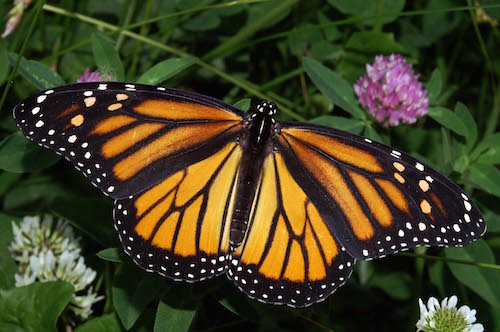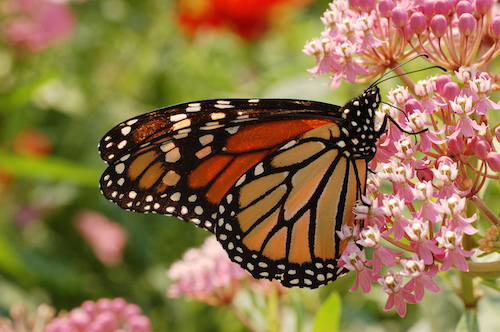Saving the Monarch Butterfly: Milkweed to the Rescue
Monarch butterflies are cherished for their distinctive beauty and majesty, but their worldwide population numbers are declining rapidly. People nationwide are planting milkweed plants in an attempt to bring the numbers for the lovely orange and black butterflies back up.
Once seen in huge numbers, spotting a monarch butterfly is becoming a rare event. The only butterfly that’s known to migrate, monarch populations have plummeted over the last twenty years. The reason? Loss of critical habitat in Mexico, where Monarchs spend the winter, is a main cause. But another major reason is the lack of availability of their only food source, milkweed, here in the U.S.
The numbers of monarchs overwintering in Mexico during 2013 and 2014 were a staggering 94% lower than their twenty-year historic highs.
The Migration of the Monarch Butterfly
Monarch migrations are among the animal world’s greatest feats. Each year in the fall, monarchs start a journey that takes them from Canada and the U.S. all the way down to central Mexico, to hibernate in forests high in the mountains for the winter. In the spring, the monarchs return north to lay their eggs and reproduce. The most amazing thing? The young monarchs that hatch in the north have never been to Mexico, yet they instinctively know where they need to go, and how to get their.
Milkweed to the Monarch Rescue
Work is being done to preserve the critical habitats for monarchs in Mexico, but equal work is underway here in the U.S. and Canada to bring back the monarch’s favorite (and only) food, the milkweed.
Monarch butterflies lay their eggs in milkweed plants; it is the only plant the monarch caterpillars eat. Unfortunately, the milkweed plant has been viewed as a pest and a weed, and has been eradicated due to pesticide use, development of natural areas, and large-scale farming. No food? No monarchs.
Monarchs also rely on milkweed at their ‘way stations,’ the butterfly equivalent of a rest stop located along their long journey from north to south, to give them the nutrition and sustenance they need for all that flying.
Due to the rapid, steep decline in monarch numbers, groups and individuals are mobilizing around the country to plant more milkweed. Since milkweed has been viewed as an undesirable weed for so long, it’s typically difficult to find milkweed seeds to purchase. Luckily, that is changing, as organizations devoted to monarch butterfly preservation are making seeds available online for little or no cost.
Be a Monarch Hero: Plant Milkweed!
It’s very easy to help the troubled monarch butterfly: Plant milkweed! If you’ve got milkweed already growing on your property, don’t remove it.
There are different species of milkweed plants, such as the common milkweed, swamp milkweed, and butterfly milkweed. Those with gardens or landscaped areas may wish to plant butterfly milkweed, which has orange flowers many find an attractive addition to the garden.
If you’d like more info on milkweed and monarchs, and to order free milkweed seeds, visit the Live Monarch Foundation at www.LiveMonarch.com.
comments powered by Disqus






































































